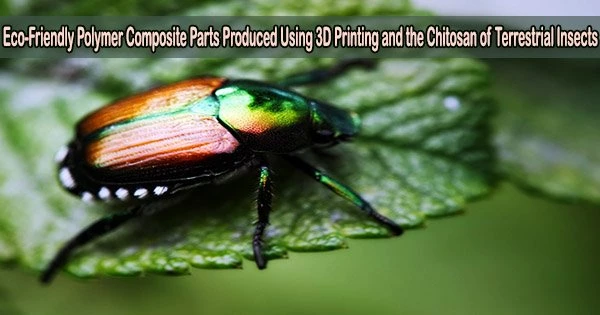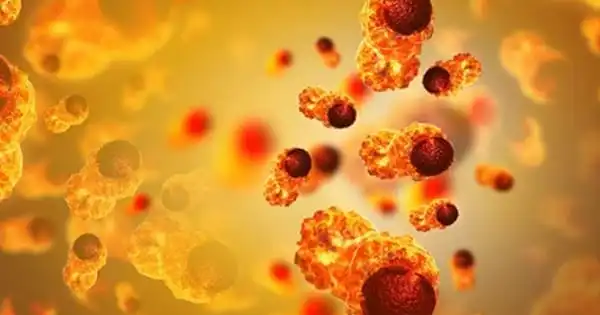A method of employing chitosan from terrestrial insects to produce eco-friendly polymer composite parts using the 3D printing technique has been successfully developed by an international interdisciplinary team of researchers from India, Malaysia, Singapore, and Thailand.
Due to its capacity to create intricate shapes and geometries that were challenging to accomplish with conventional manufacturing methods, 3D printing is a type of additive manufacturing technology that has recently gained popularity.
As a result, the demand for raw material for 3D printing is on the rise. In order to achieve UN Sustainable Development Goal No. 12, which is to encourage sustainable consumption and production patterns, it is essential to ensure responsible raw material utilization for 3D printing.
Chitin, a polysaccharide present in the exoskeletons of arthropods like insects and sea creatures like crabs, is the source of the natural biopolymer chitosan.
Because of their prevalence, accessibility, and relatively high chitin content in their exoskeletons, terrestrial insects are a possible source of chitosan. The manufacture of chitosan from terrestrial insects has the potential to be sustainable and environmentally beneficial, among other advantages.
Since they may be easily raised and harvested in great quantities without harming the environment, insects are a sustainable supply of chitosan.
On the other hand, conventional sources of chitosan, including the shells of shrimp and crab, may not be environmentally friendly and unsustainable. However, there is disagreement over the appropriate application for chitin and chitosan compounds derived from terrestrial insects.
This study looked into the viability of employing 3D printing technology to create an eco-friendly composite material.
The research discovered that adding chitin and chitosan, which are made from terrestrial insects, to the PLA matrix resulted in a loss of strength and stiffness, which got worse with higher chitin and chitosan concentrations.
In comparison to other composites created utilizing additive manufacturing, the composite material with 0.5 weight percent chitin reinforcement had the lowest tensile and flexural strength.
The lower interfacial bonding between the reinforcement and matrix was the cause of the chitin/PLA and chitosan/PLA composites’ decreased strength and stiffness in compared to clean PLA. This resulted in polymeric slippage when the composite was subjected to an external load.
However, the chitin/PLA and chitosan/PLA composites demonstrated enhanced ductility relative to neat PLA, with the 0.1 wt% chitin composite showing the highest ductility. It was concluded that chitin and chitosan could contribute to toughening the PLA composite.
The study also discovered that as chitin and chitosan concentrations rose, so did the density of the composites. The crystalline and chemically bonded character of the composite samples was confirmed by FTIR and XRD investigations.
Microstructural analysis of the composites revealed voids and impurity-like particles linked to the breakdown of chitin and chitosan. The Chitin/PLA and Chitosan/PLA composites exhibited good thermal stability, and could have potential applications for food product packaging based on their compressive properties.
In order to enhance the mechanical properties of the composites and the method’s scalability for industrial production, more study is required to look at interfacial bonding and post-treatment techniques.
There is little doubt that employing chitosan (chitin) made from terrestrial insects as a material to make filaments for 3D printed parts could contribute to a low carbon manner of achieving the UN Sustainable Development Goal 12, which is to promote sustainable consumption and production patterns.
















